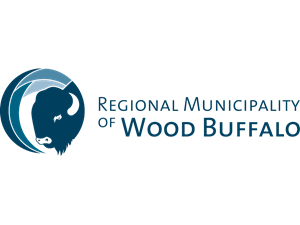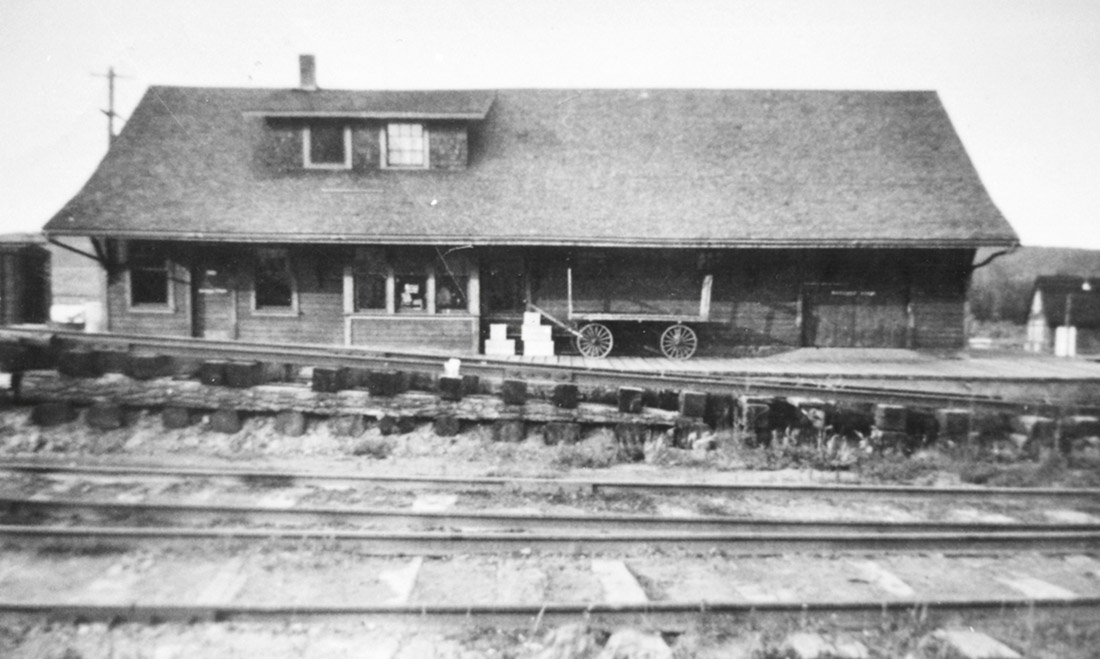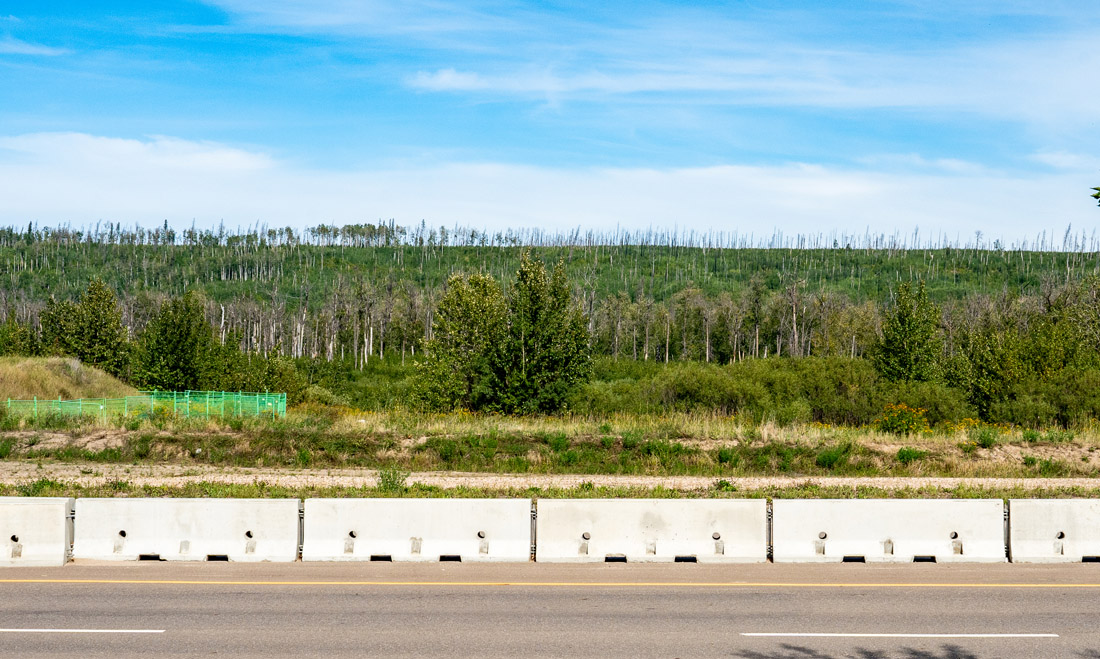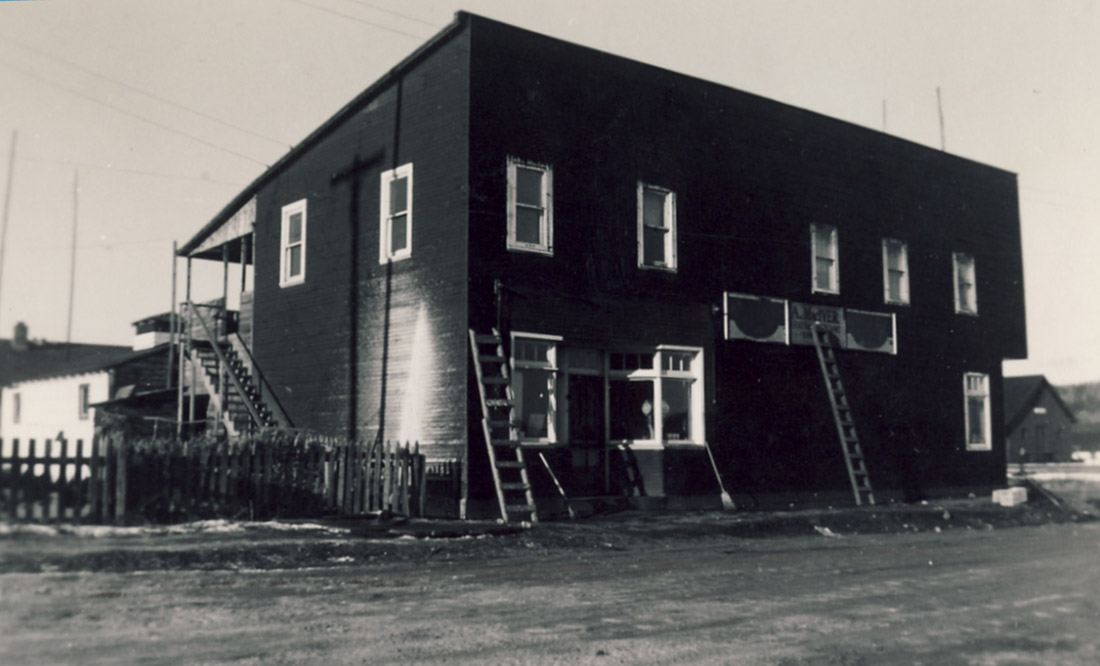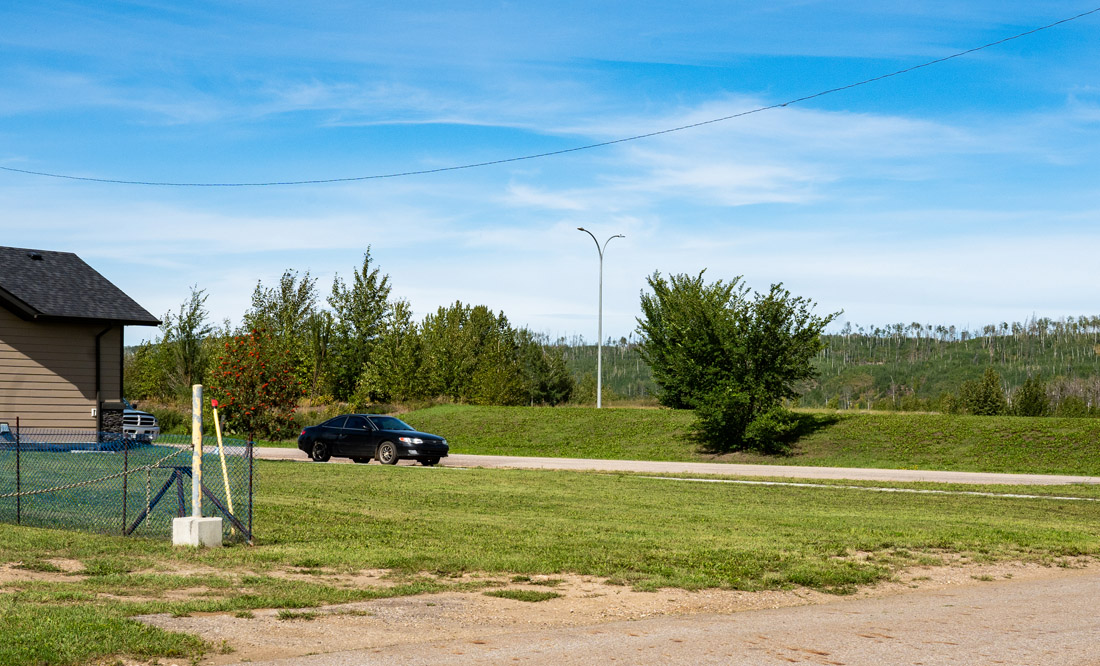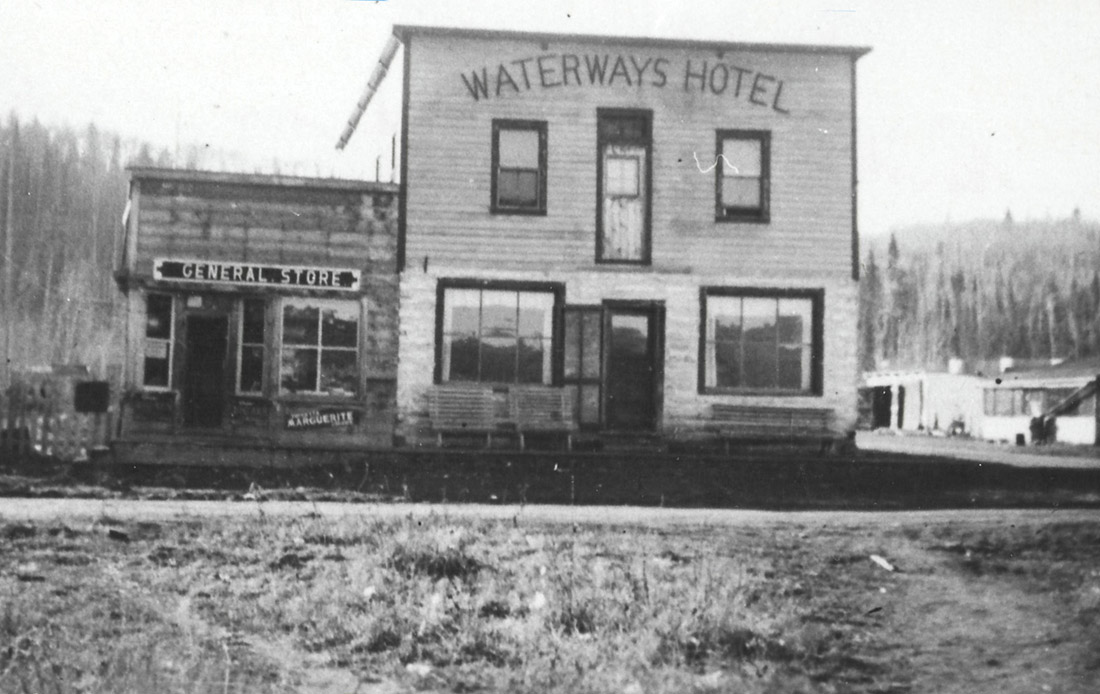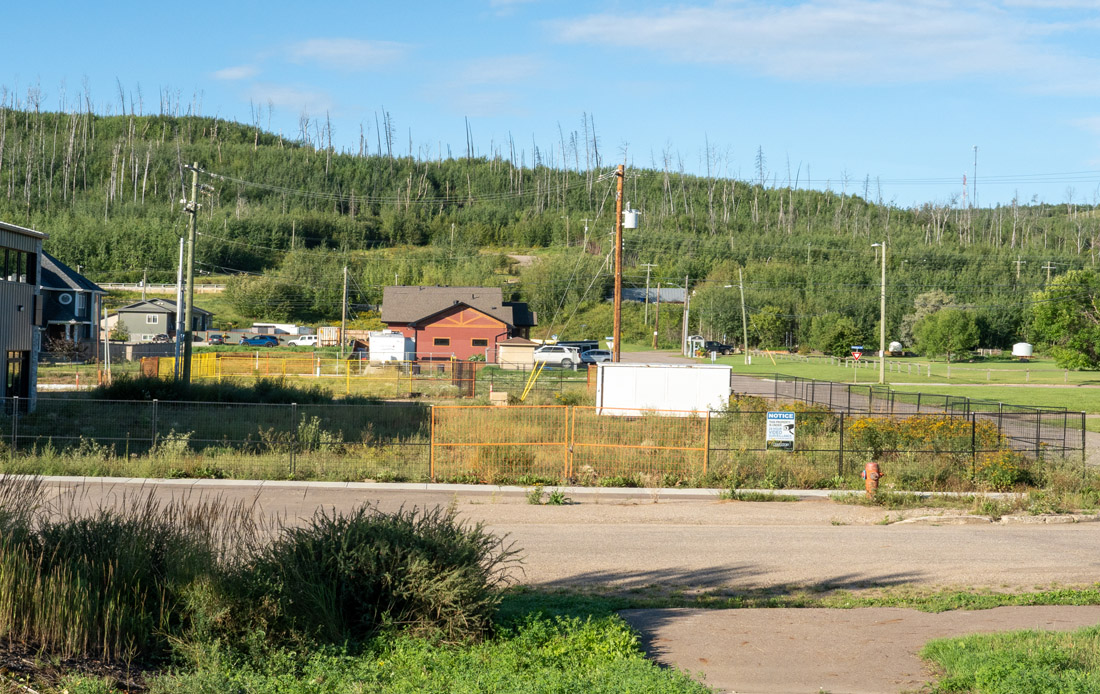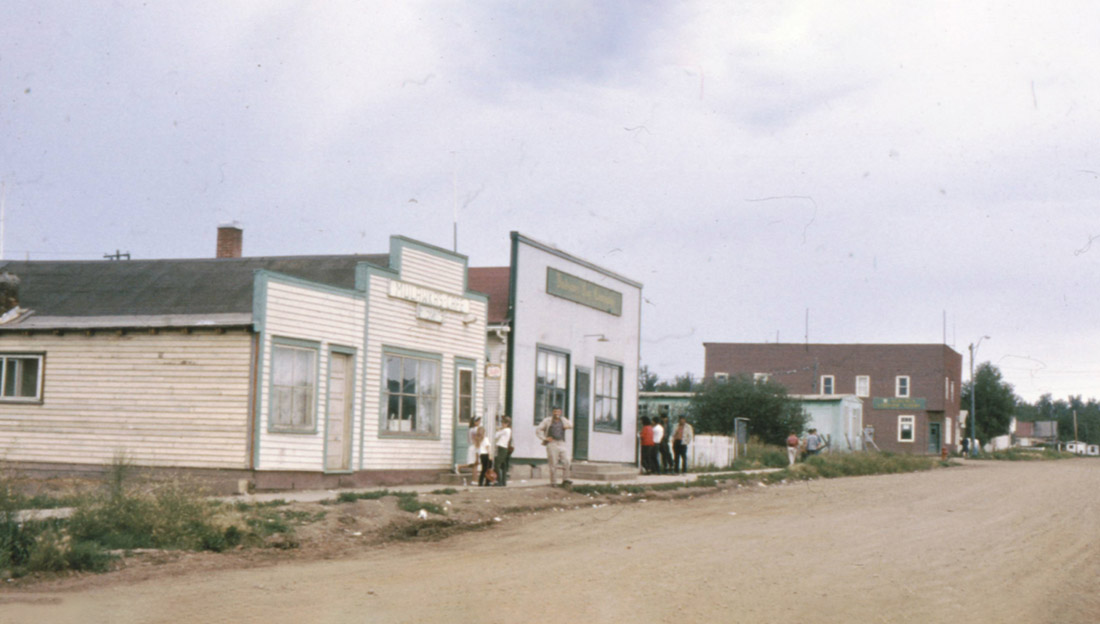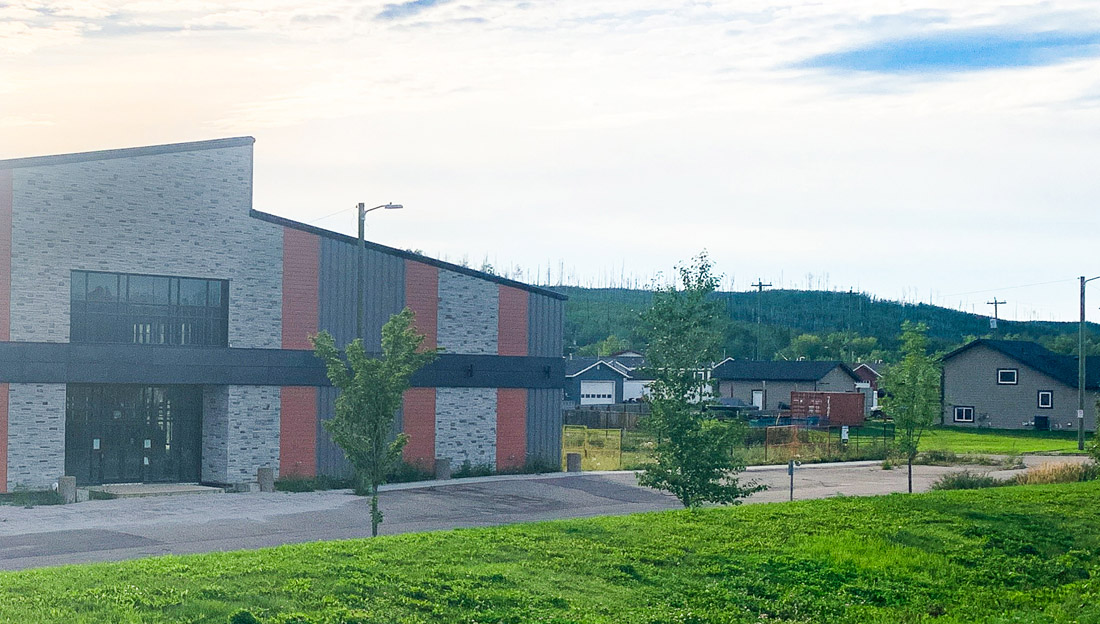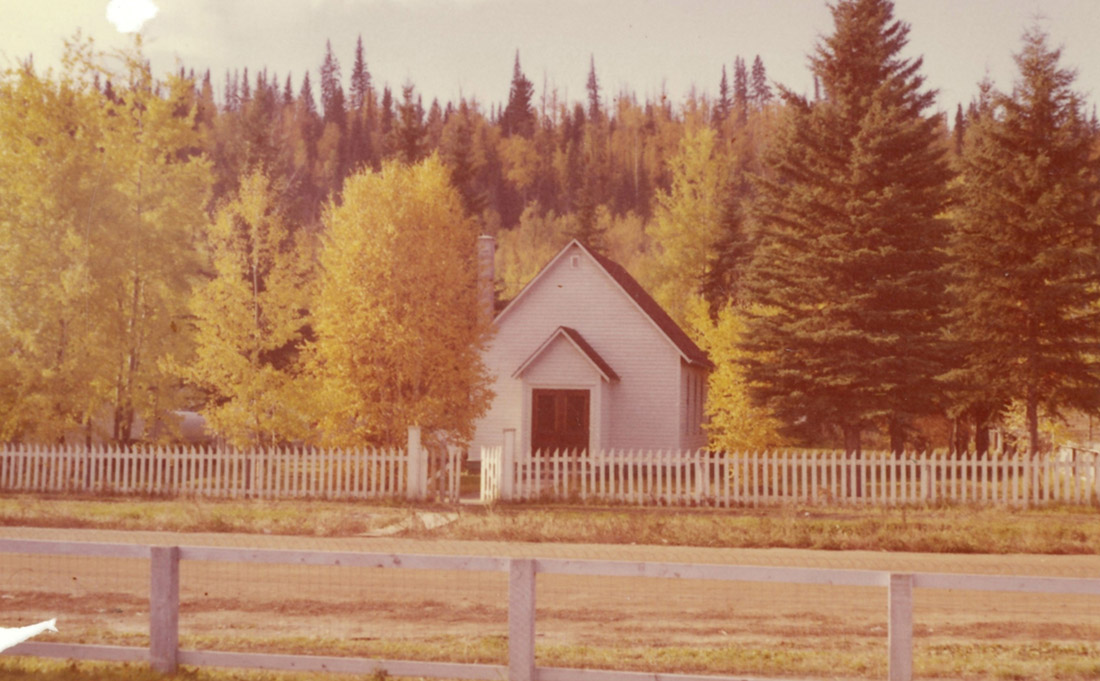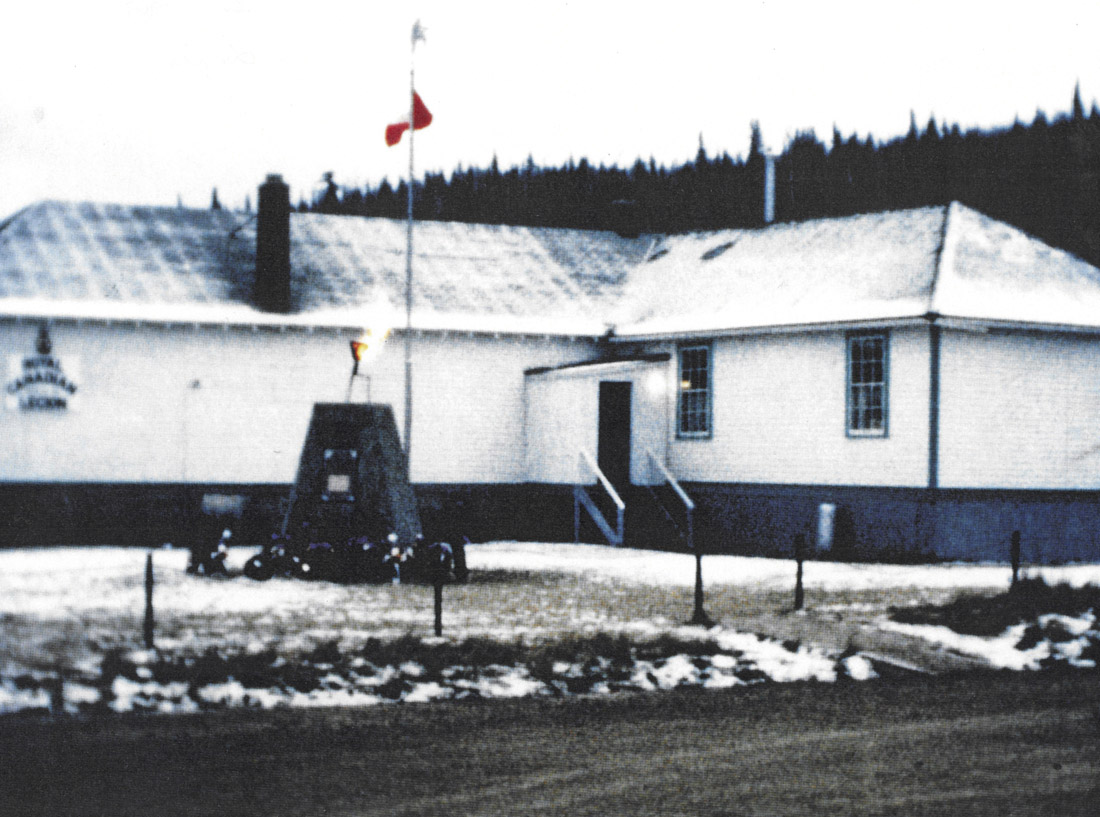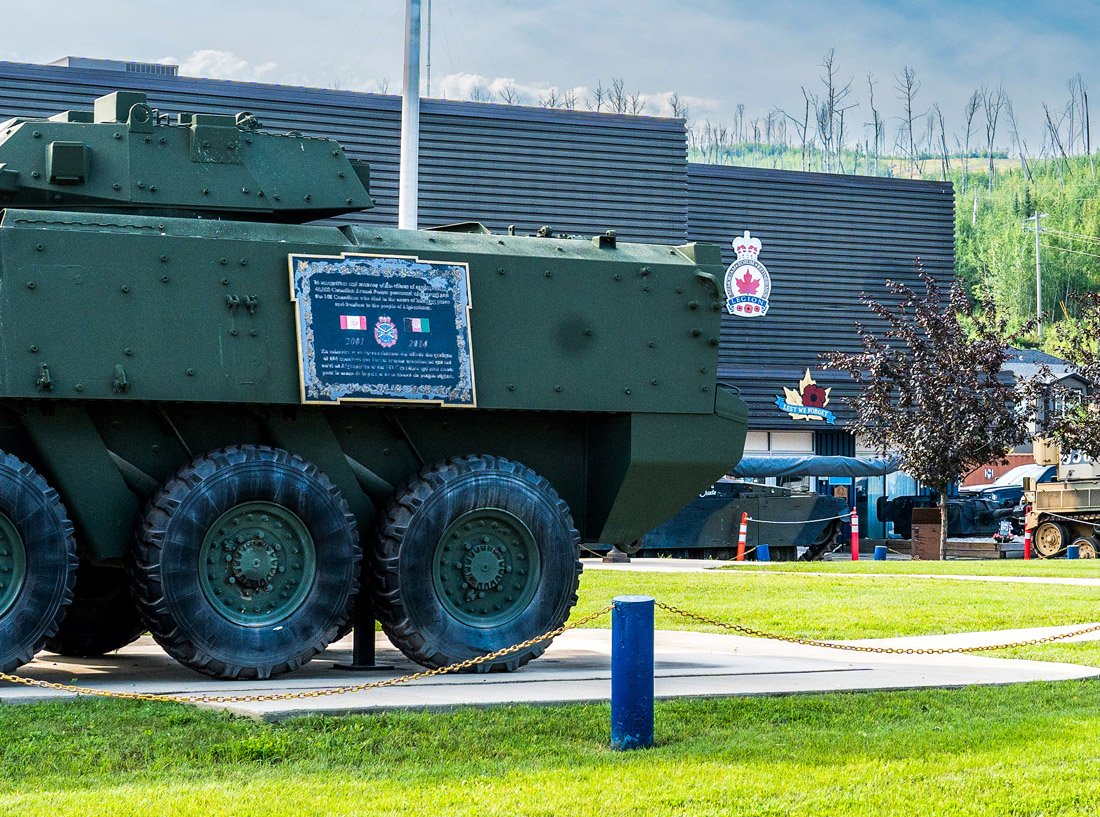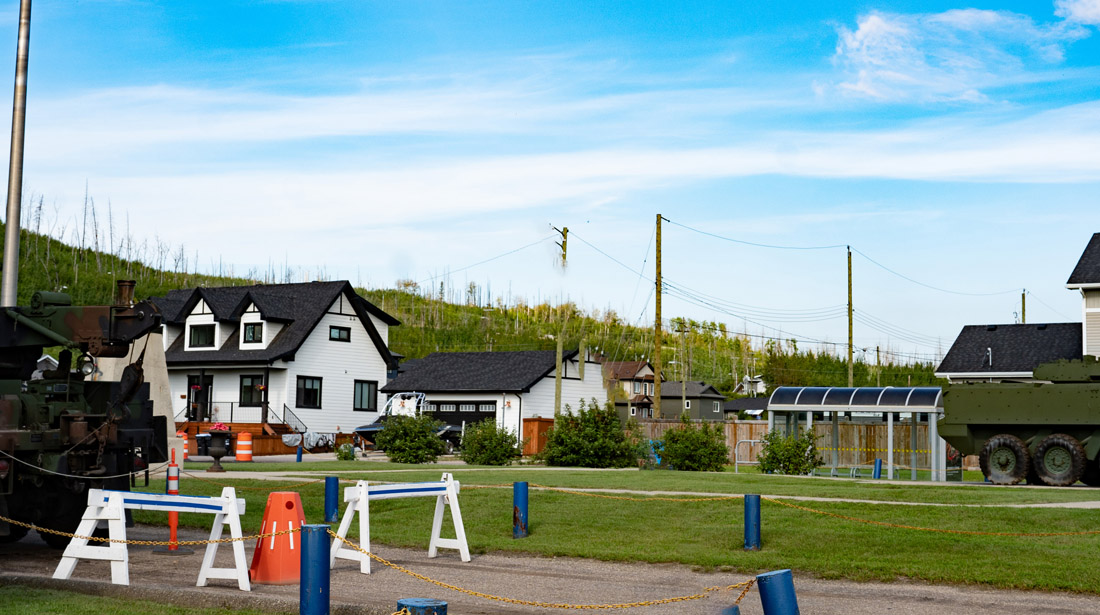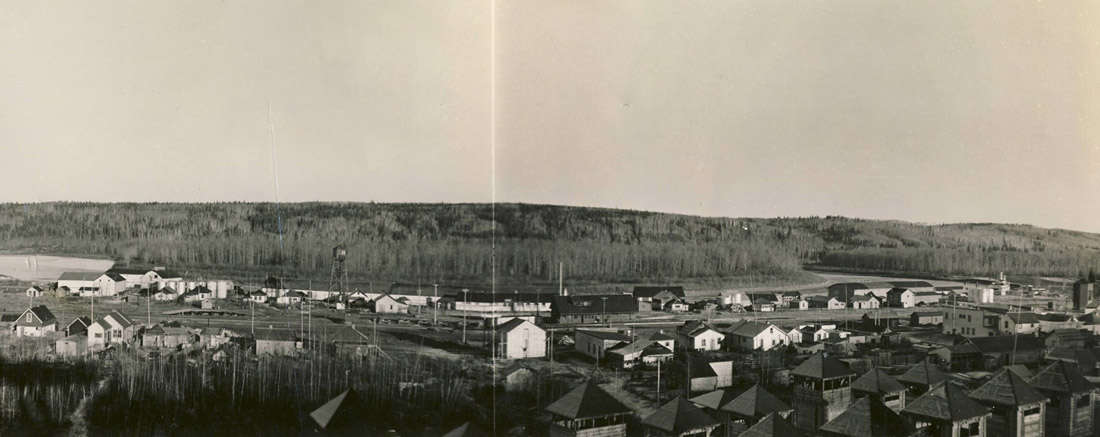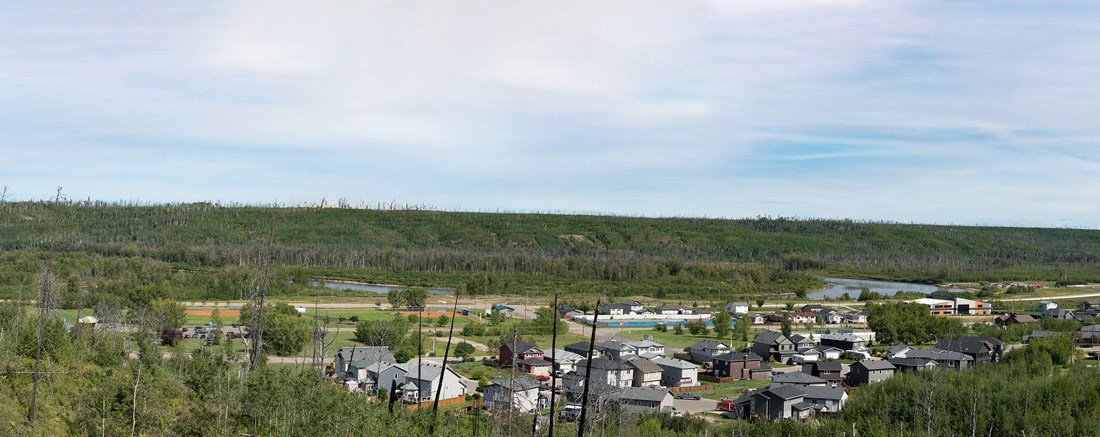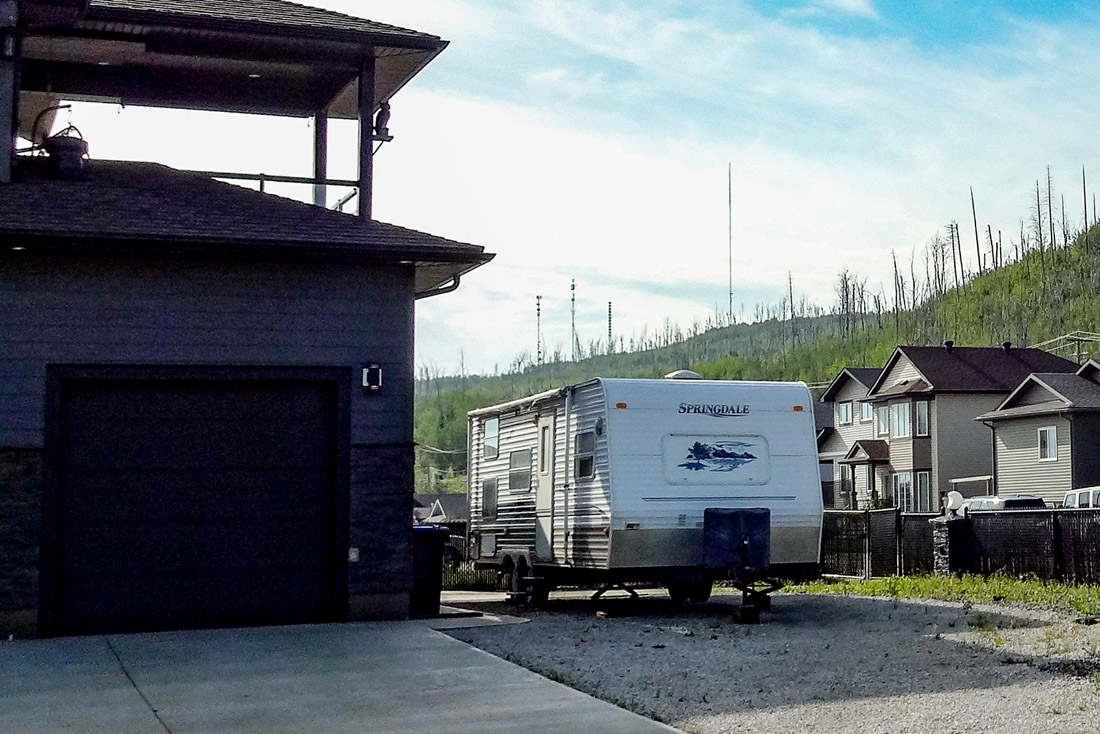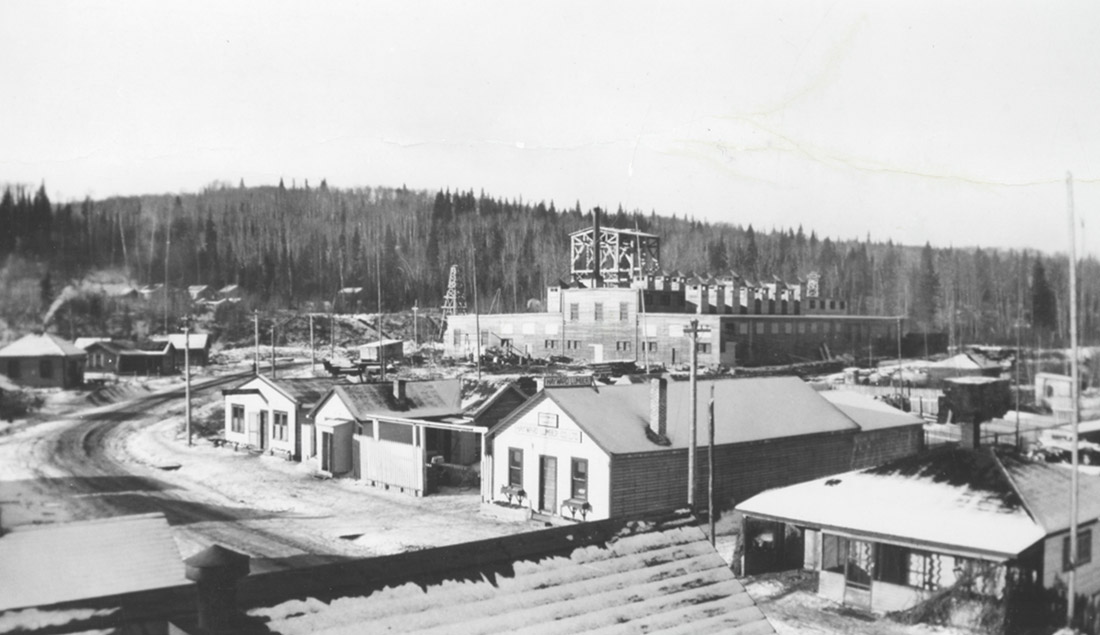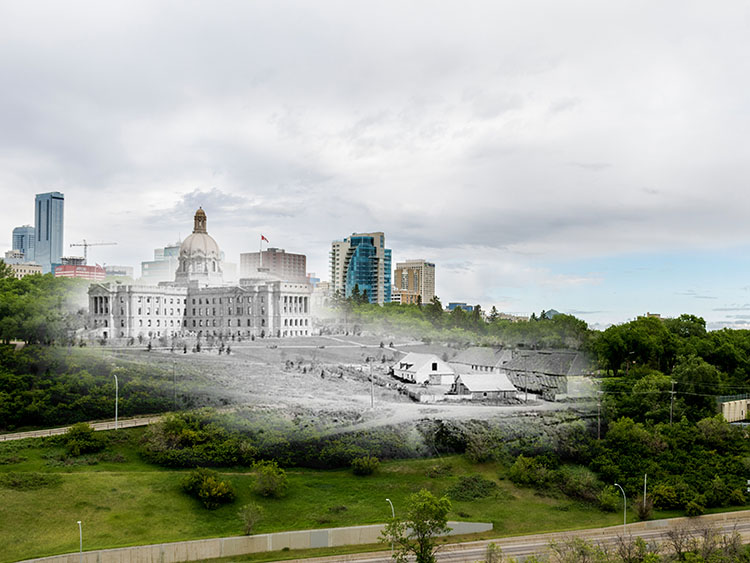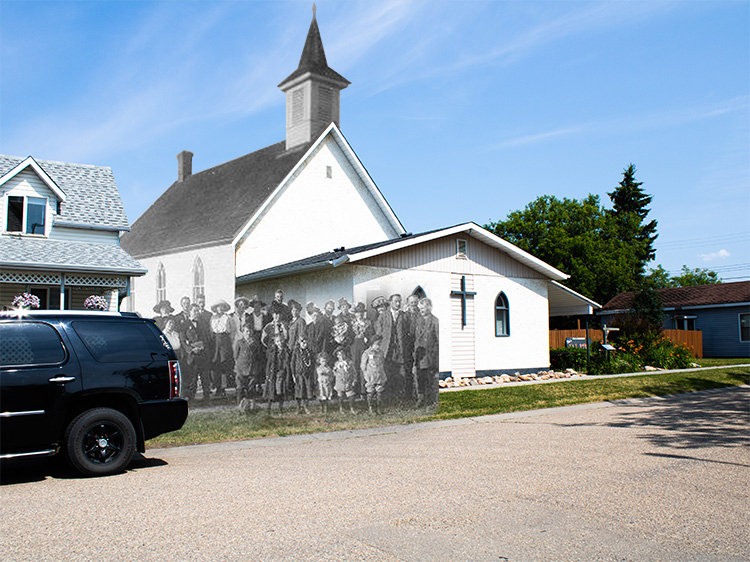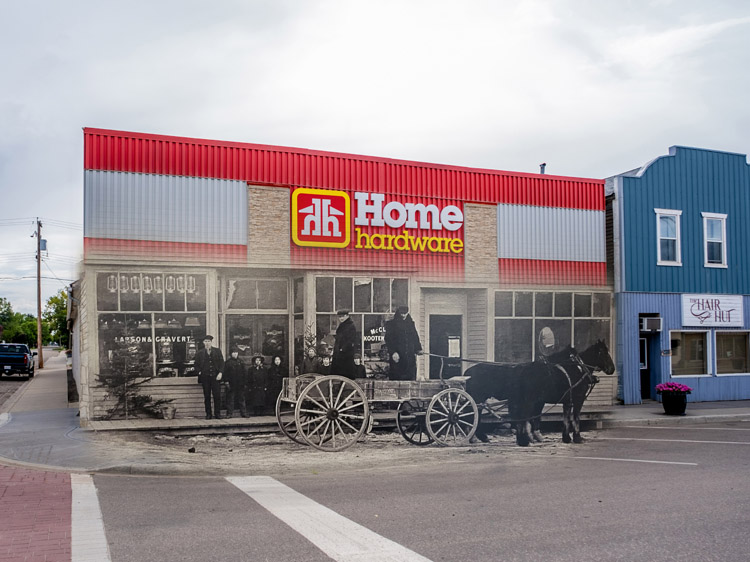Walking Tour
Where Steel Meets Keel
The Waterways Neighbourhood
By Jessica Barry
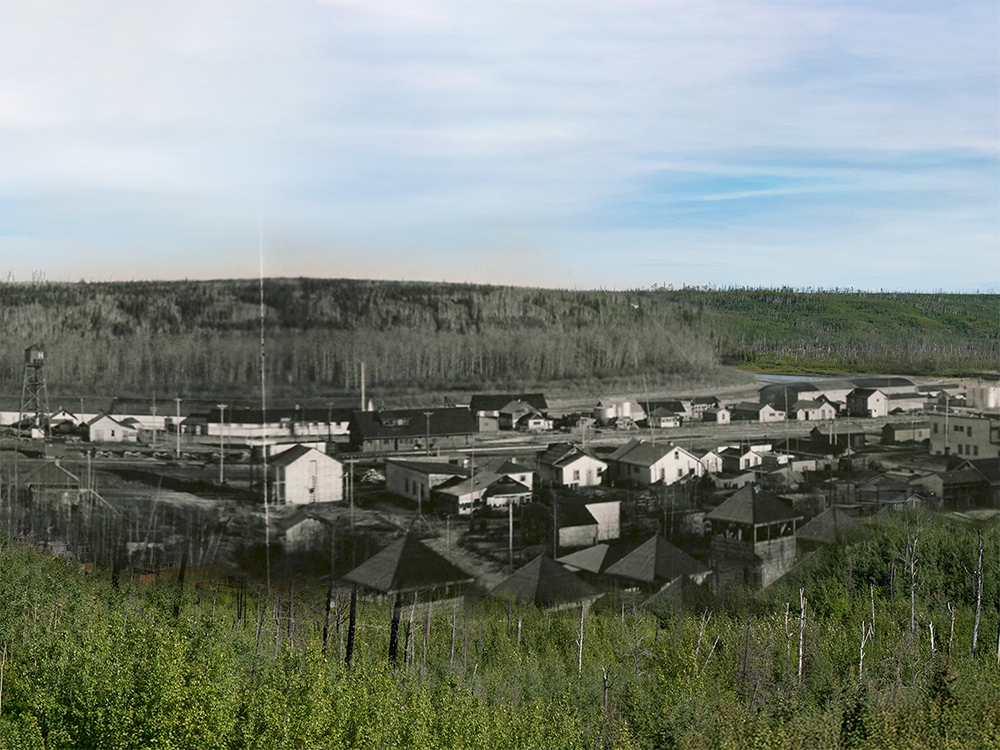
Fort McMurray Heritage Society
Did you know that Waterways, now a part of Fort McMurray, was once an independent village until 1947? When the railway arrived in 1925, it attracted new residents and helped local businesses thrive. Waterways soon became a lively community known for its many industries. This heritage walking tour will explore the history of Waterways and the stories that shaped its past!
With thanks to the Provincial Archives of Alberta and the Fort McMurray Heritage Society.
This project is a partnership with the Regional Municipality of Wood Buffalo. We'd like to thank the Fort McMurray Heritage Society and the Provincial Archives of Alberta for contributions.
1. Northern Alberta Railway Station
1932
The railway arrived in Waterways in 1925 and played an important role in the community’s growth. It was the last stop on the Alberta & Great Waterways Railway and the only land route to Edmonton until the completion of Highway 63 in the 1960s.
Waterways was a key transportation hub where "steel met keel." Passengers and goods got off the train at Waterways and transferred to barges to continue north along the river system.
* * *
Ridership decreased over the years as Highway 63 improved and Highway 881 was built. As a result, the Muskeg Flyer stopped running in 1987, and the Muskeg Mixed ended its service in 1989.The train station sat vacant until 1998, when it was destroyed by fire. To honour its history, the Jack “Torchy” Peden Centre and Gift Shop at Heritage Shipyard was built to resemble the original station.
2. MacIver's General Store
ca. 1940-1960
Railway Avenue was the main street in Waterways, bustling with shops and services. Among them were a hotel, a drug store, a theatre, a café, and MacIver’s General Store. This brick building was built in the early 1940s and had many different uses over the years. It started as MacIver's General Store, run by Alick and Mildred Della MacIver, who lived in an apartment above the store. It also had a post office inside and stayed open for about 12 years. In 1954, the MacIvers moved to Uranium City, Saskatchewan, to open another general store. By 1960, the building became an Alberta Liquor Store and later turned into a private home. The building was demolished in 2016.
3. Waterways Hotel
Fort McMurray Heritage Society
1937
The Waterways Hotel was built in 1926 by Cornelius Burton near the Waterways Train Station. It began as a two-story building and later expanded to include a general store and a post office. The hotel became an important gathering spot for the community, especially during the Second World War when American soldiers were stationed nearby for the CANOL project. On the morning of October 30, 1951, a fire destroyed the Waterways Hotel, along with two other businesses: Sutherland's Pharmacy and Garth Moore's Lunch. The nearby Hudson's Bay Company store was saved by wet blankets covering the roof. The hotel was not rebuilt after the fire.
4. Hudson's Bay Store
William Becker Dorin Collection, FMHS.
1960
When the railway came to Waterways, many new businesses opened along Railway Avenue. One of these was a general store run by the Eymundson family, which competed with the Hudson's Bay Company (HBC). In 1942, the HBC bought the building and built a manager's house next door. This house had an indoor toilet and running water, which were rare luxuries in the area at that time. The HBC store did well because of the railway traffic and the busy community. However, by the 1950s, local businesses started to struggle. The store closed in 1956, and eventually, the building was torn down.
5. St. Aidan's Anglican Church
Tolen Family Collection, FMHS.
1958
St. Aidan's Anglican Church was built in 1938 and was a place for Anglicans and other Protestant groups to worship until September 5, 1965, when it held its last service. The church became too small for the growing number of worshippers, so the congregations from Waterways and Fort McMurray joined together to create All Saints Anglican Church in Fort McMurray.
In 1973, the building was sold to the First United Pentecostal congregation, who renovated it and used it until 1986. After that, the Fort McMurray Historical Society, now called the Fort McMurray Heritage Society, took over the building. Today, St. Aidan's Church is located in Heritage Village.
6. Royal Canadian Legion
ca. 1960s
In 1945, the local Legion Branch #165 held its first meeting at the New Franklin Hotel on Franklin Avenue in Fort McMurray. Membership grew quickly, and they needed a larger space. The Legion bought a Nissen hut, a type of prefabricated building, to use as their meeting area. The hut was placed at the corner of MacDonald Avenue and Richard Street, until 1961 when they obtained the former Waterways School building, which was no longer in use. The Legion members used the former school until 1976, when they built a larger two-story building on the site.
7. Waterways School
Bern Will Brown Collection, FMHS.
ca. 1958
Before 1939, children in Waterways had to walk to Fort McMurray to go to school. This changed when the Waterways School District #4843 was created, and a one-room school was built with a basement. Within a year, the school became overcrowded with more than 60 students and St. Aidan's Anglican Church was used for classes for grades six to eleven. The school expanded in 1942 and again in 1946. In 1955, the Waterways and Fort McMurray school districts combined. Students in grades nine and ten attended school in Fort McMurray, while students in grades eleven and twelve remained in Waterways. The Waterways School closed in 1961, and the land was sold. The Royal Canadian Legion used the former school until their Legion Hall was completed in 1976. The Waterways School was demolished in 1977.
8. Industrial Panorama
ca. 1939
This perspective provides an overview of Waterways. The riverfront was active, especially in summer, with docks and wharves stretching ten blocks along the Clearwater River.
* * *
East of the HBC were buildings owned by McInnes Fish Company Limited. This company had several wooden structures, like a warehouse, a shipyard, an ice house, and severaldocks. The fish from Lake Athabasca and Buffalo Lake had such high quality that they were shipped by train to Chicago and New York!
To the west of the HBC warehouse was Imperial Oil, a fuelling station, which supplied heating oil for homes and businesses.
Beside Imperial Oil was the Northern Transportation Company Limited (NTCL) barge terminal. NTCL was a shipping business. The first major project for the Waterways location was the transport of plains bison to Wood Buffalo National Park. Between 1925 and 1928, a total of 6, 673 bison were brought by train to Waterways and then loaded onto barges and sent north.
9. Waterways Catholic Church
ca. 1964
This church was built in 1939, the same year that the St. John the Baptist Catholic Church in downtown Fort McMurray burned down. According to a former resident, mass was held at this church every Sunday, with an average attendance of 40 to 50 people. Most ceremonies, such as First Communion and Confirmation, took place at the larger St. John the Baptist Church in Fort McMurray. This church was demolished sometime in the 1970s.
10. Industrial Minerals Limited
Fort McMurray Heritage Society
1941
The Waterways Salt Plant opened in 1937 and was a major employer in the area for over ten years. The plant made table salt and salt blocks for cattle, helping the region become known on the international market. At its busiest, it operated three shifts daily. However, it closed on June 9, 1950, because more profitable salt deposits were found elsewhere in Alberta and Saskatchewan. The plant was torn down two years later.
* * *



